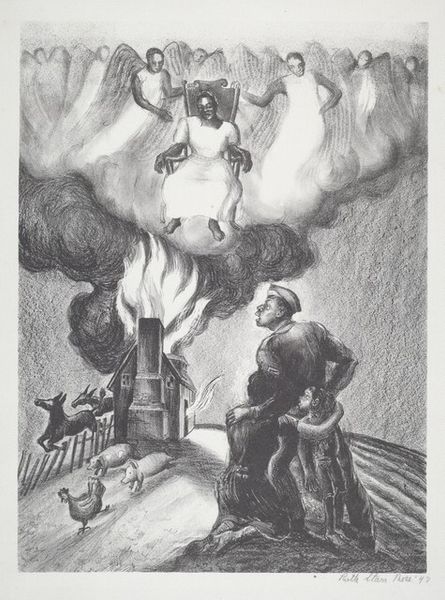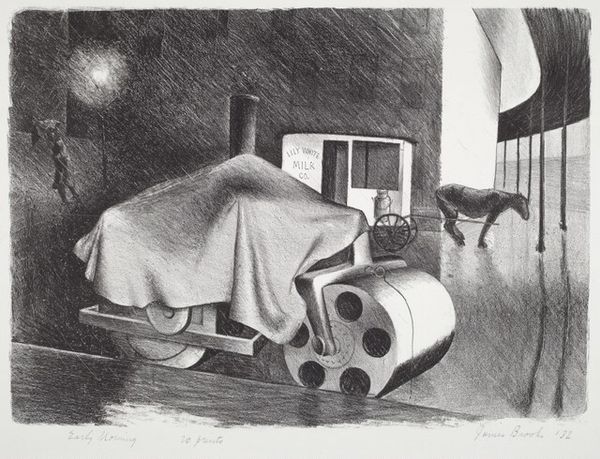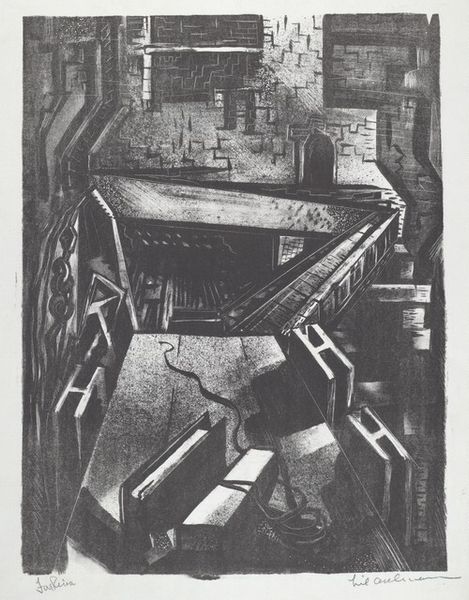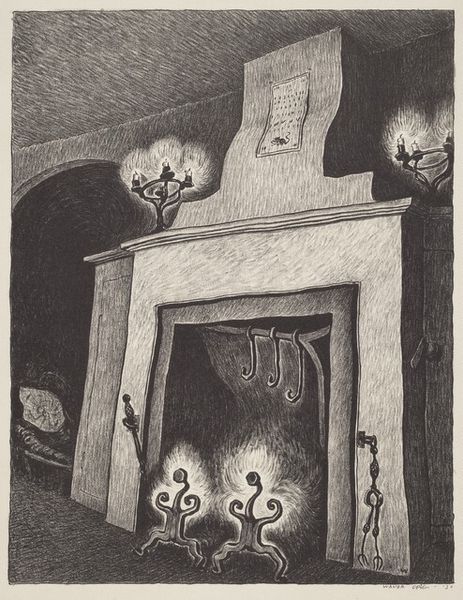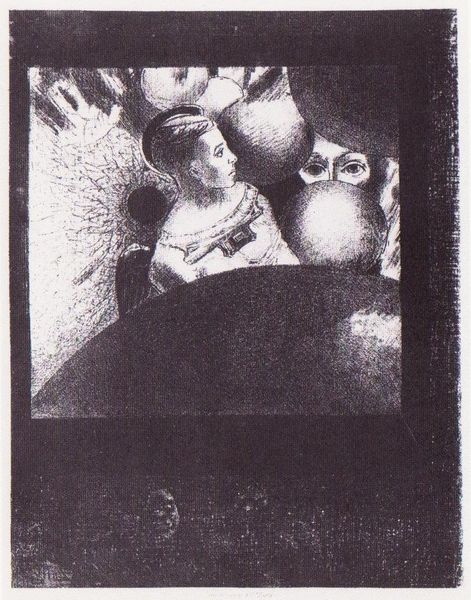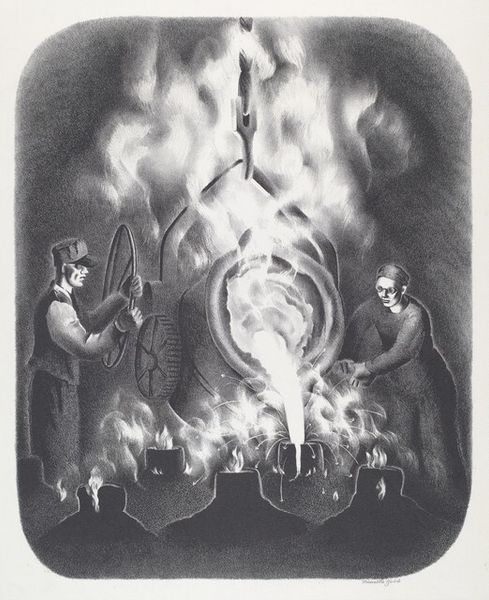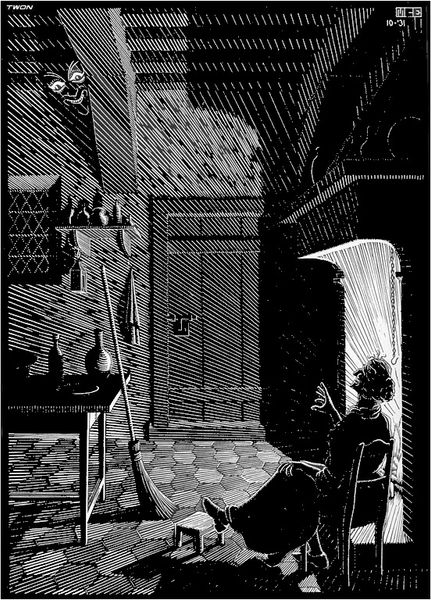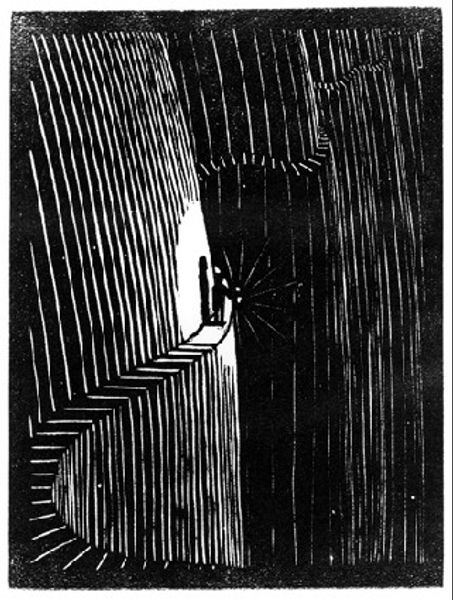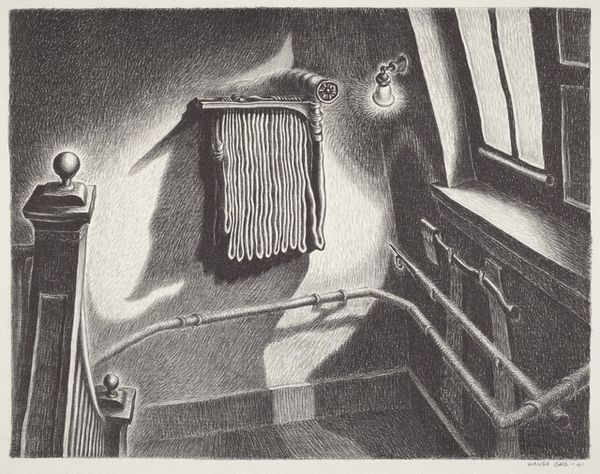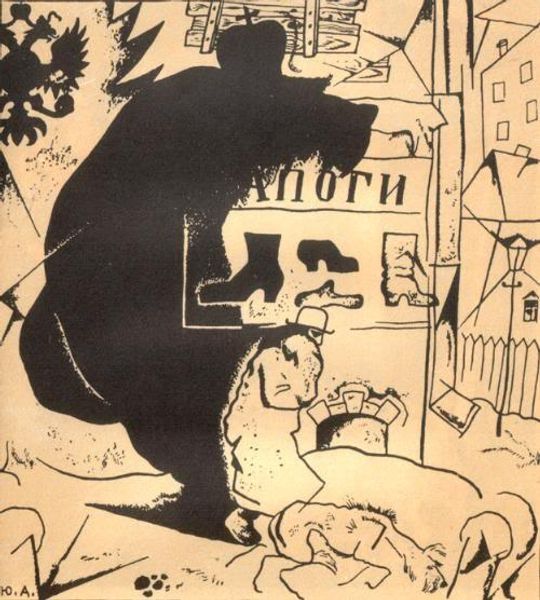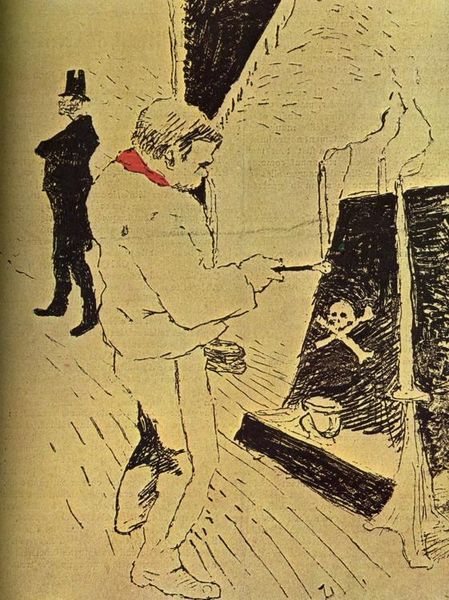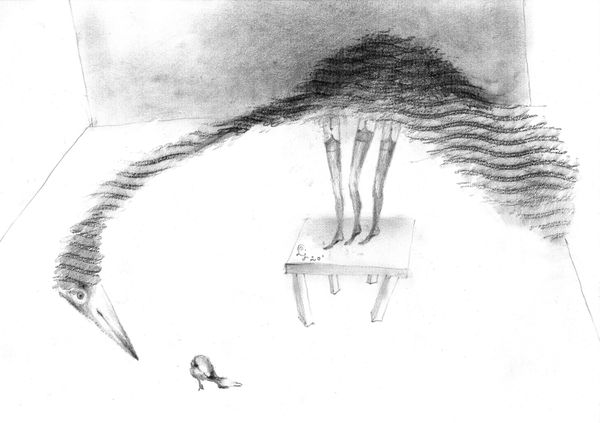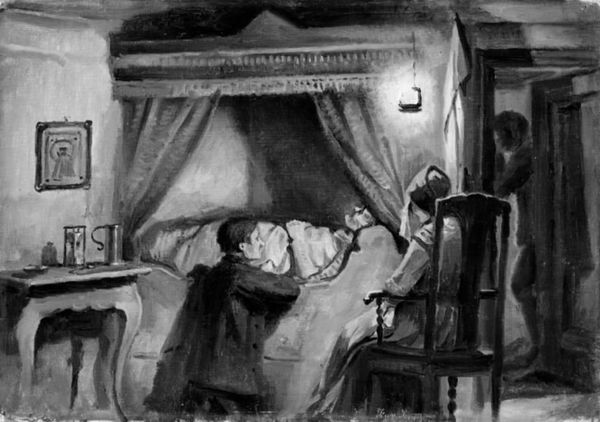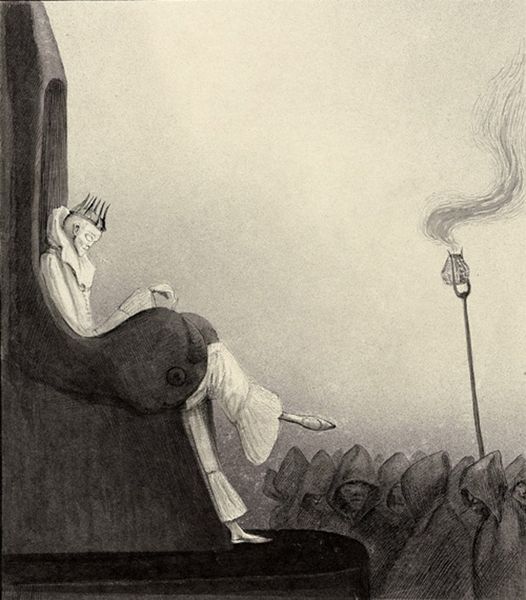
The Electric Furnace Taylor-Wharton Iron & Steel Company Est 1742 c. 1935 - 1938
0:00
0:00
drawing, print, graphite
#
drawing
# print
#
landscape
#
charcoal drawing
#
graphite
#
history-painting
#
charcoal
#
graphite
#
realism
Dimensions: image: 423 x 329 mm sheet: 585 x 405 mm
Copyright: National Gallery of Art: CC0 1.0
Editor: So, this is "The Electric Furnace Taylor-Wharton Iron & Steel Company Est 1742," a drawing or print by Minnetta Good, circa 1935-1938. It’s pretty striking. All the smokiness gives it a palpable atmosphere. What do you see as the defining elements of its visual impact? Curator: I’m particularly struck by the dramatic use of chiaroscuro. Notice how Good uses gradations of graphite and charcoal to create a dynamic play of light and shadow. The composition’s power relies on the stark contrast between the blinding glare of the furnace and the enveloping darkness. This contrast is critical in establishing both form and emotional intensity. Editor: That makes sense. The light definitely grabs your attention. Are there other compositional techniques at play here? Curator: Certainly. Consider how the artist frames the scene, leading the viewer's eye from the worker and the sparks emanating from the tool to the imposing furnace and, eventually, up into the swirling smoke. The diagonal lines created by the worker's tool create dynamism. But, more important, how do you interpret the artist's choice of media given the image content? Editor: Well, graphite and charcoal are inherently monochromatic, but the shades create intense drama… it seems fitting for such a potent, industrial scene. It almost feels… documentary, but also artistic. Curator: Precisely. And think about the texture Good achieves. The smooth, almost polished look of the metal contrasts against the rough, granular quality of the smoke. These juxtapositions reinforce the sense of scale and power inherent in this industrial setting. Editor: I see what you mean. The artist uses fairly simple tools to convey really complex ideas about industry. I hadn’t thought about it in that way. Curator: Formal elements like line, texture, and light are essential tools for an artist to not only represent their subjects, but infuse them with emotional depth and narrative power. Paying attention to the how is a necessary step in explaining the what.
Comments
No comments
Be the first to comment and join the conversation on the ultimate creative platform.
